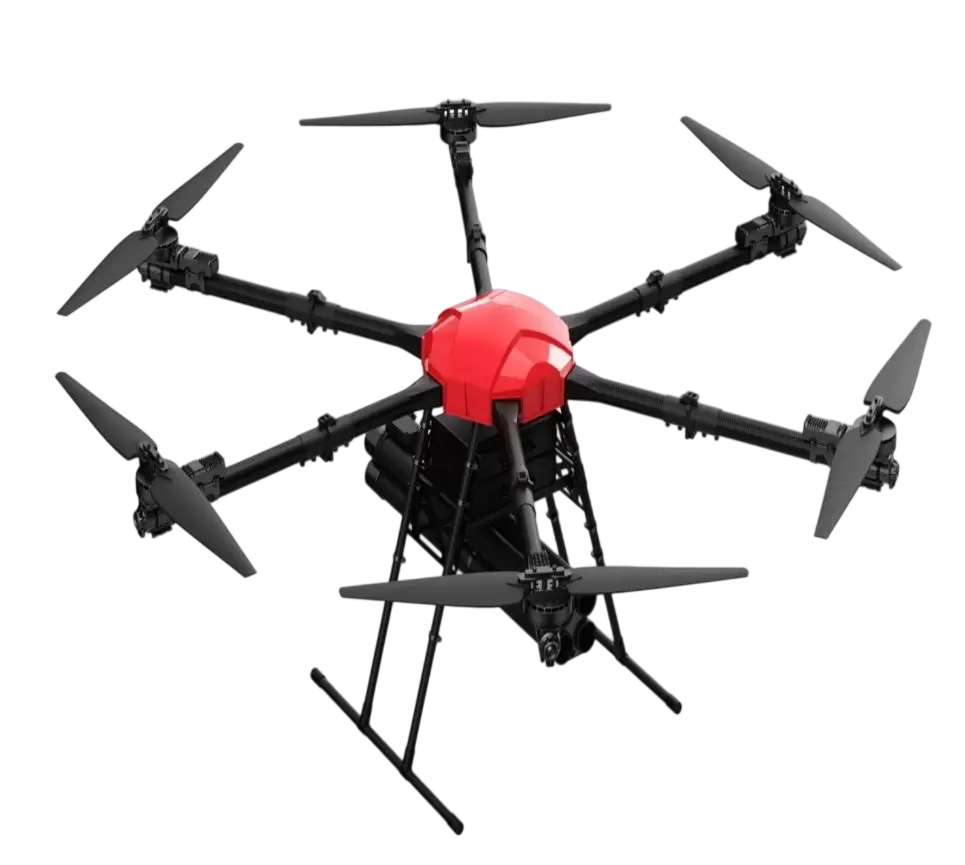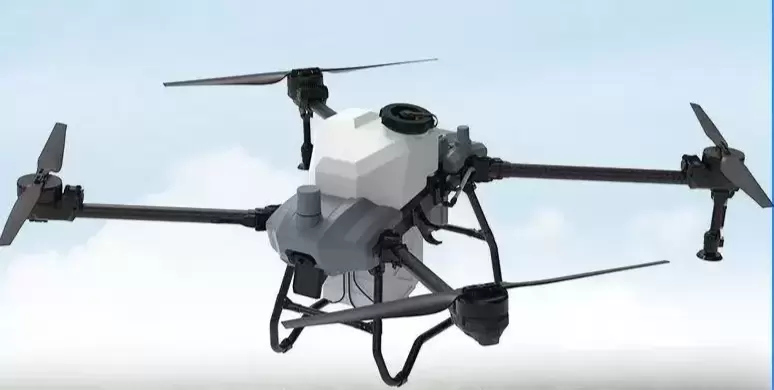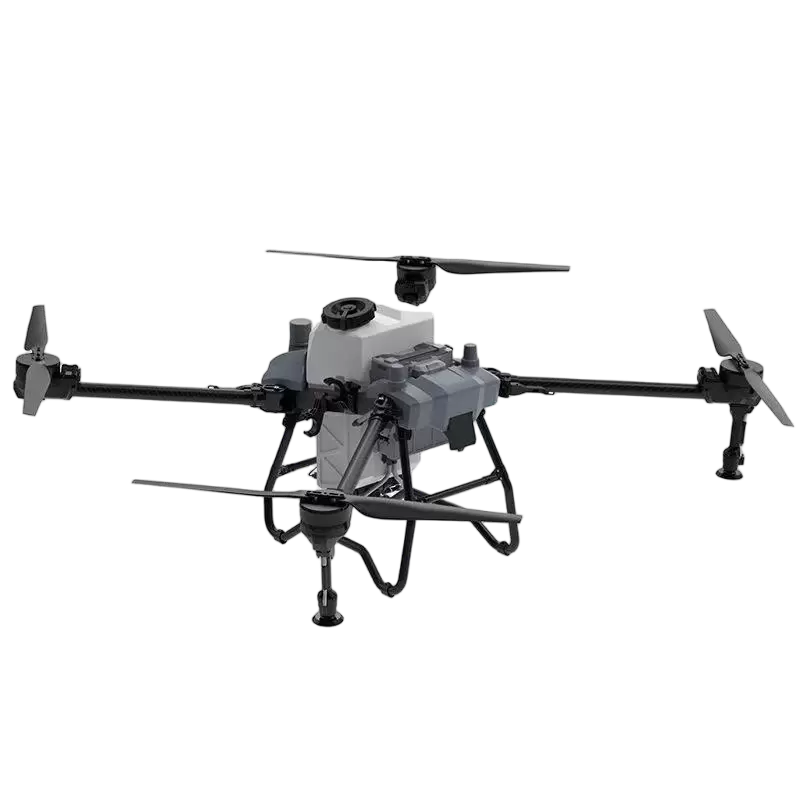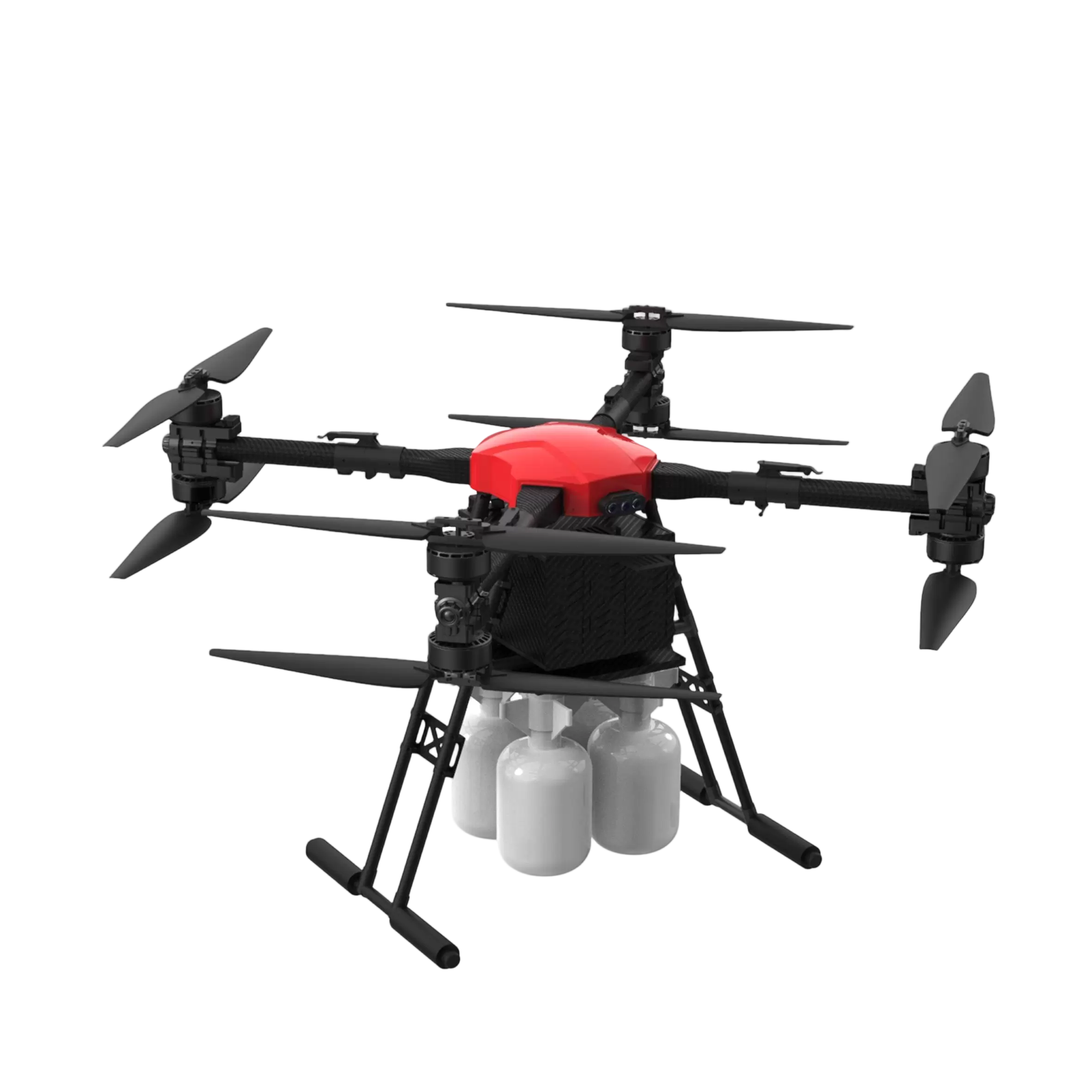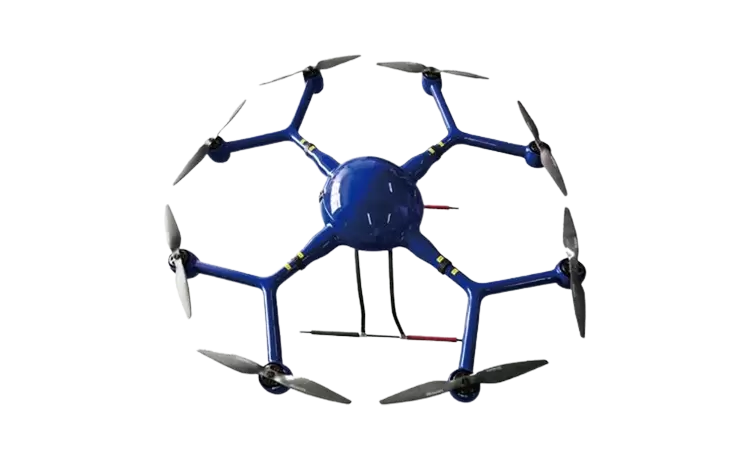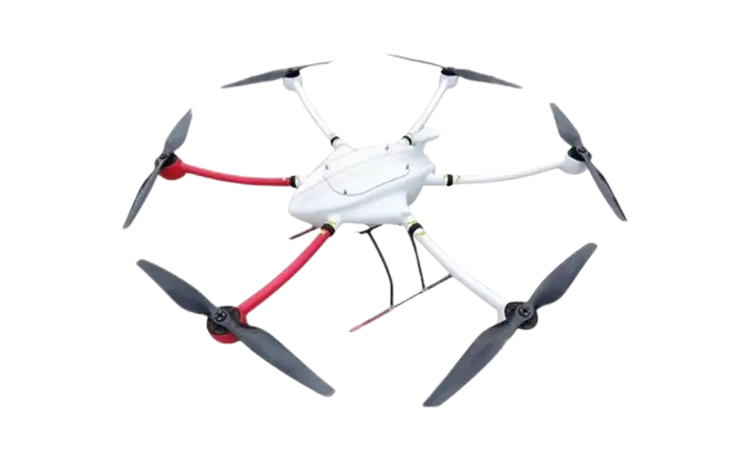Introduction
In recent years, the drone fiber optic tube has emerged as a revolutionary technology, sparking widespread attention within the industry. This innovative device combines the flexibility and mobility of drones with the high - speed data transmission capabilities of fiber optic technology. As a key component, the fiber optic tube allows drones to maintain a stable and high - bandwidth connection during flight, opening up new possibilities for a wide range of applications. From industrial inspections to scientific research, the drone fiber optic tube is transforming the way we approach tasks that require real - time data and remote operation. In the following, we will explore in detail some of the most remarkable applications of this cutting - edge technology.
The Marvel of Drone Fiber Optic Tube Technology
The drone fiber optic tube is a technological marvel that combines the portability of drones with the high - performance data - transmission capabilities of fiber optics. At its core, the fiber optic tube contains one or more optical fibers, which are made of extremely pure glass or plastic. These fibers are designed to transmit data in the form of light signals.
The principle of signal transmission in a fiber optic tube is based on total internal reflection. When light enters the optical fiber at a certain angle, it bounces off the inner walls of the fiber instead of escaping, allowing the light to travel long distances within the fiber with minimal signal loss. In a drone - fiber - optic - tube setup, a light source, such as a laser diode, is used to convert electrical signals (which could be video, sensor data, or control commands) into light signals. These light signals are then injected into the optical fiber within the tube.
Compared to traditional wireless communication technologies used in drones, such as Wi - Fi or radio - frequency (RF) links, the fiber optic tube offers several distinct advantages. Firstly, in terms of data - transmission speed, fiber optic cables can support significantly higher bandwidths. While typical wireless links might be limited to a few hundred Mbps, fiber optic connections can easily achieve speeds in the Gbps range. This high - speed data transfer is crucial for applications that require real - time, high - definition video streaming, like industrial inspections of large - scale facilities or live - feed coverage of events.
Secondly, fiber optic transmission provides exceptional signal stability. Wireless signals are often susceptible to interference from various sources, including electromagnetic interference (EMI) from other electronic devices, environmental factors such as weather (rain, snow, fog can attenuate wireless signals), and physical obstacles. In contrast, the fiber optic tube, shielded within a protective outer casing, is much less affected by these external factors. The light signals within the fiber are isolated from most forms of interference, ensuring a reliable and consistent connection during drone operations. This stability is especially important in critical applications, such as search - and - rescue missions or military operations, where a loss of communication could have serious consequences.
Another advantage is the security of data transmission. Since fiber optic cables transmit light signals within a closed - loop system, it is extremely difficult for unauthorized parties to intercept the data compared to wireless signals that can be easily intercepted with the makes fiber right equipment. This - optic - tube - equipped drones a preferred choice for applications where data security is of utmost importance, such as government surveillance or corporate - sensitive inspections.
Revolutionary Applications in [Field Name 1]
Revolutionary Applications in Telecommunications
In the telecommunications field, the drone fiber optic tube is making waves, especially in the construction of communication infrastructure in remote areas. One of the most pressing challenges in the expansion of communication networks is reaching areas with difficult terrains, such as mountains, deserts, or islands. Traditional methods of laying fiber optic cables in these regions are often time - consuming, costly, and logistically challenging.
For instance, in a recent project in a mountainous area of Southeast Asia, a telecommunications company faced the task of connecting several isolated villages to the main communication grid. Using traditional construction methods, it was estimated that the project would take at least six months and require a large workforce, along with heavy machinery that was difficult to transport to the site. However, by employing drones equipped with fiber optic tubes, the company was able to significantly streamline the process.
The drones were first loaded with high - strength fiber optic cables stored in the fiber optic tubes. They took off from a central base and flew along the pre - planned routes towards the target villages. As the drones flew, they slowly released the fiber optic cables from the tubes. The lightweight and agile nature of the drones allowed them to navigate through the mountainous terrain with ease, reaching areas that were otherwise inaccessible to traditional cable - laying equipment.
In just two weeks, the drones successfully laid the fiber optic cables between the villages and the main communication hub. This not only reduced the construction time by over 80% but also cut down on labor costs significantly. After the installation, the villagers experienced a dramatic improvement in their communication capabilities. Internet speeds increased from a meager few kilobits per second (kbps) with unreliable satellite - based connections to several megabits per second (Mbps), enabling them to access online education resources, telemedicine services, and e - commerce platforms.
The use of drone fiber optic tubes in this case not only solved the immediate communication problem but also opened up new economic opportunities for the remote communities. Small - scale businesses in the villages could now reach a wider customer base through online platforms, and students could participate in virtual classrooms, bridging the digital divide between rural and urban areas.
Groundbreaking Applications in [Field Name 2]
Groundbreaking Applications in Power Line Inspection
In the power industry, ensuring the stable operation of power lines is crucial for continuous electricity supply. The application of drone fiber optic tubes in power line inspection is revolutionizing the way this critical task is carried out.
Before the advent of drone - fiber - optic - tube technology, power line inspections were often a labor - intensive and time - consuming process. Inspectors had to physically travel along the power lines, sometimes in difficult terrains, and manually check for any signs of damage, wear, or other issues. This method was not only inefficient but also posed significant risks to the safety of the inspectors, especially when dealing with high - voltage lines.
Now, with drones equipped with fiber optic tubes, the inspection process has become much more efficient and accurate. The drones are loaded with various detection devices, such as high - definition cameras, infrared thermal imagers, and ultraviolet detectors. As the drones take off and fly along the power lines, these devices start to work.
The high - definition cameras capture detailed images of the power lines, towers, and insulators. Any visible signs of damage, such as cracks in the insulators, corrosion on the towers, or frayed wires, can be clearly seen. The infrared thermal imagers, on the other hand, detect abnormal heat signatures. Overheated components in the power system can indicate potential failures, and the thermal imagers can quickly identify these hotspots, even in the early stages of a problem. Ultraviolet detectors are used to detect corona discharges, which are often precursors to more serious electrical problems.
The data collected by these devices is then transmitted in real - time through the fiber optic tubes to the ground control station. The high - speed data - transmission capabilities of the fiber optic tubes ensure that the large amount of image and sensor data can be sent back without delay. At the ground control station, experienced technicians can analyze the data immediately. They can zoom in on specific areas of interest, compare the current data with historical records, and make accurate judgments about the condition of the power lines.
For example, in a large - scale power grid in Central Europe, a power company adopted drone fiber optic tube technology for its power line inspections. In the past, it took a team of inspectors weeks to complete the inspection of a particular section of the power grid. After using the new technology, a single drone operator, along with a few technicians at the control station, could complete the same inspection in just a few days. This not only significantly increased the inspection efficiency but also reduced the overall inspection cost.
Moreover, the use of drone fiber optic tubes in power line inspection has enhanced the reliability of the power supply. By detecting potential problems early, maintenance teams can take proactive measures to fix the issues before they lead to power outages. This is of great significance for both industrial and residential users, as uninterrupted power supply is essential for daily operations and quality of life. In industrial settings, power outages can cause production disruptions, leading to significant economic losses. For residential areas, a stable power supply is necessary for the normal functioning of household appliances, lighting, and communication devices.
Overcoming Challenges and Future Prospects
Despite its remarkable advantages and diverse applications, the drone fiber optic tube still faces several challenges that need to be addressed for its further development and widespread adoption.
One of the major challenges is the impact of harsh weather conditions. Although fiber optic tubes are more stable than wireless communication in general, extreme weather such as heavy rain, strong winds, and snowstorms can still pose problems. For example, heavy rain can cause water to seep into the fiber optic tube's connectors, leading to signal attenuation or even complete signal loss. Strong winds can exert excessive stress on the fiber optic cable as the drone maneuvers, increasing the risk of cable breakage. To mitigate these issues, ongoing research is focused on developing more waterproof and weather - resistant materials for the fiber optic tubes and improving the design of the connectors to prevent water intrusion.
Cost is another significant factor. The production and deployment of drone fiber optic tube systems can be relatively expensive. The manufacturing process of high - quality fiber optic cables, along with the sophisticated equipment required for signal transmission and conversion, contribute to the high cost. Additionally, the need for specialized training for operators to handle the fiber optic - equipped drones adds to the overall expense. However, as the technology matures and economies of scale come into play, the cost is expected to gradually decline. For instance, with the increasing demand for fiber optic - related products in various industries, the mass production of fiber optic cables can lead to cost reductions in raw material procurement and manufacturing processes.
Looking ahead, the future of drone fiber optic tube technology holds great promise. In terms of technical breakthroughs, we can anticipate the development of even more advanced fiber optic materials. Scientists are exploring the use of new materials to create fiber optic cables that are not only lighter in weight but also possess enhanced mechanical strength and flexibility. This would enable drones to carry longer fiber optic cables with less impact on their flight performance and payload capacity.
Moreover, the integration of artificial intelligence (AI) and machine learning (ML) algorithms with drone fiber optic tube systems is likely to be a major trend. AI - powered drones could analyze the data transmitted through the fiber optic tubes in real - time, making autonomous decisions about flight paths, data collection priorities, and even predictive maintenance for the equipment. For example, in power line inspections, an AI - enabled drone could detect subtle changes in the condition of power lines over time and predict potential failures before they occur, based on the data received through the fiber optic tube.
In terms of application expansion, the drone fiber optic tube could find its way into more complex and critical scenarios. In the field of disaster relief, for example, in the aftermath of a major earthquake or flood, drones with fiber optic tubes could be used to quickly establish communication networks in the affected areas. They could provide real - time video feeds of the disaster - stricken regions, helping rescue teams to assess the situation and plan their operations more effectively. In the field of environmental monitoring, fiber - optic - equipped drones could be used to monitor large - scale ecosystems. They could transmit high - resolution images and data on water quality, air pollution levels, and deforestation rates in real - time, enabling environmentalists to respond more promptly to ecological changes.
In conclusion, while the drone fiber optic tube currently faces challenges, the potential for growth and innovation in this field is substantial. With continuous research and development, we can expect to see this technology play an even more significant role in various industries, further enhancing our capabilities in data collection, communication, and remote operation.
Conclusion
The drone fiber optic tube represents a significant leap forward in technology, with far - reaching implications for multiple industries. Its ability to provide high - speed, stable, and secure data transmission during drone flight has already transformed telecommunications infrastructure construction and power line inspection, among other fields. By enabling real - time data transfer and remote operation, it has increased efficiency, reduced costs, and enhanced the safety of various tasks.
Despite the challenges it faces, such as weather - related issues and high costs, the future of the drone fiber optic tube is bright. With continuous research and development efforts, we can expect to see more robust and cost - effective systems. The integration of AI and ML, along with the development of advanced fiber optic materials, will further expand its capabilities and applications.
It is crucial for industries, researchers, and policymakers to recognize the potential of this technology. By investing in research, promoting its adoption, and addressing the existing challenges, we can unlock the full potential of the drone fiber optic tube. This will not only drive innovation within individual sectors but also contribute to overall technological progress and societal development, enabling us to tackle complex problems more effectively and create a more connected and efficient world.






